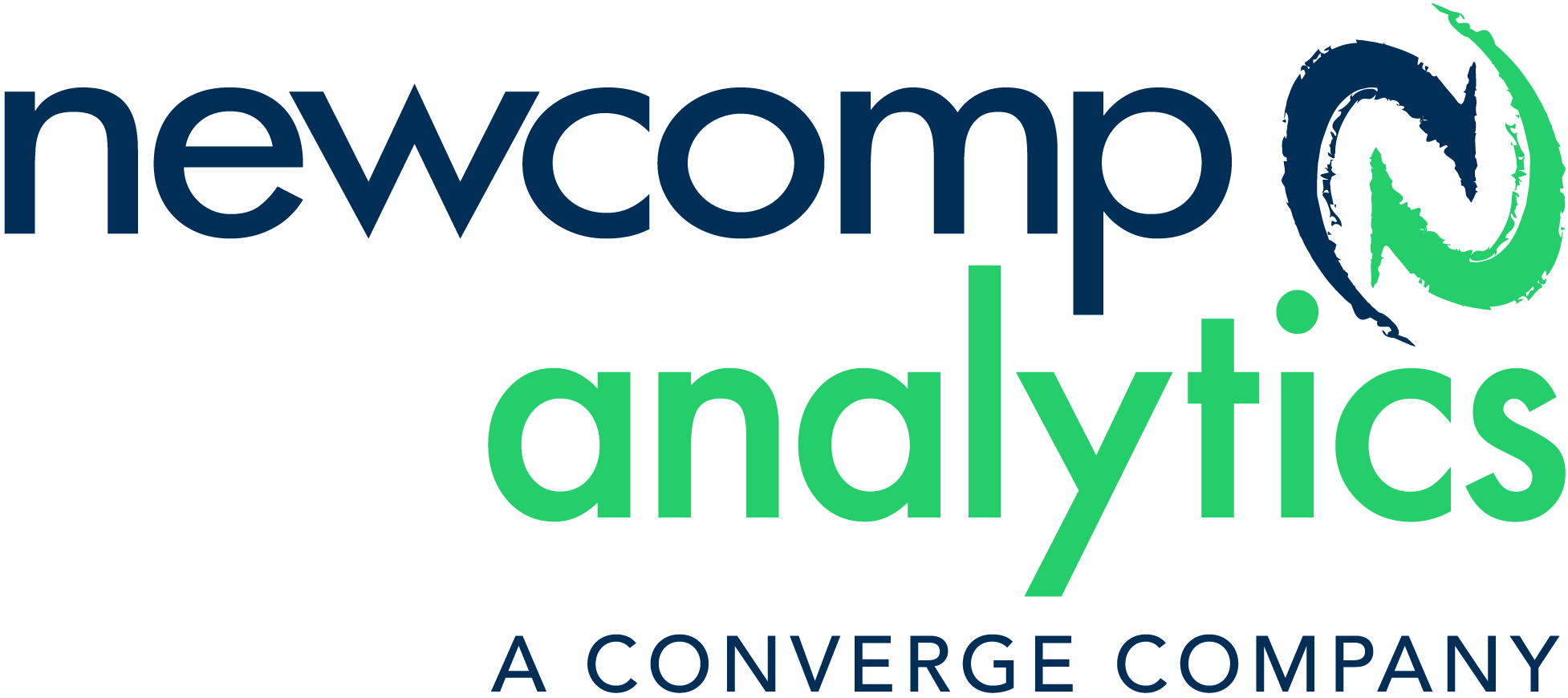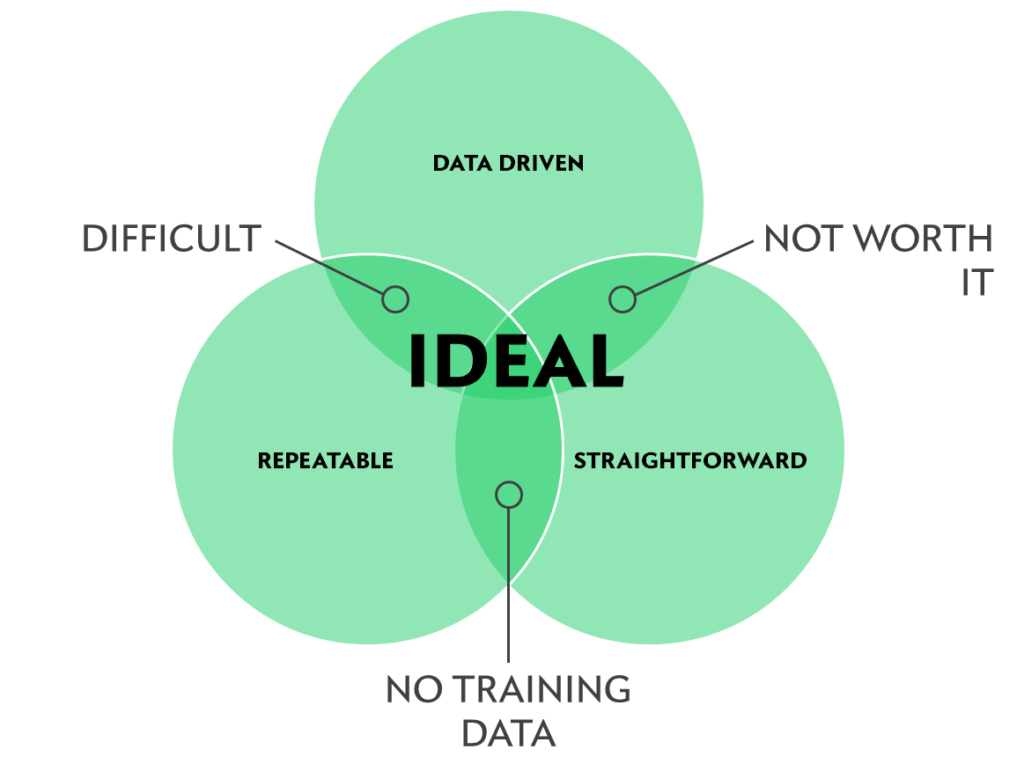MEET THE BOTS
Operating a business is never simple, but the last 9 months of 2020 changed the way leaders think about technology. This is especially true when technology is considered in terms of our workforce, global market access, and finding competitive advantages – not to mention simply just making sure our businesses survive this disruption. Over and over we hear CEOs repeat the battle cries of digital transformation: “modernize and automate.”
The global robotic process automation (RPA) market size was already valued at $1.40 billion in 2019 and is expected to reach $11 billion by 2027, expanding at a CAGR of 34% from 2020 to 2027 (Grand View Research).
To understand the appeal of RPA, consider how human work is done now. On a typical workday, employees spend 10%-25% of their time on repetitive computer tasks that reduce the productivity of workers. No industry is immune, and these 2-4 hours each day are spent doing tasks that are hated by workers.
Obviously, as AI becomes more mainstream, workers and leaders in all industries and functions are paying attention to the potential automation of human tasks. Look at the interest in RPA leading up to the COVID-19 pandemic:
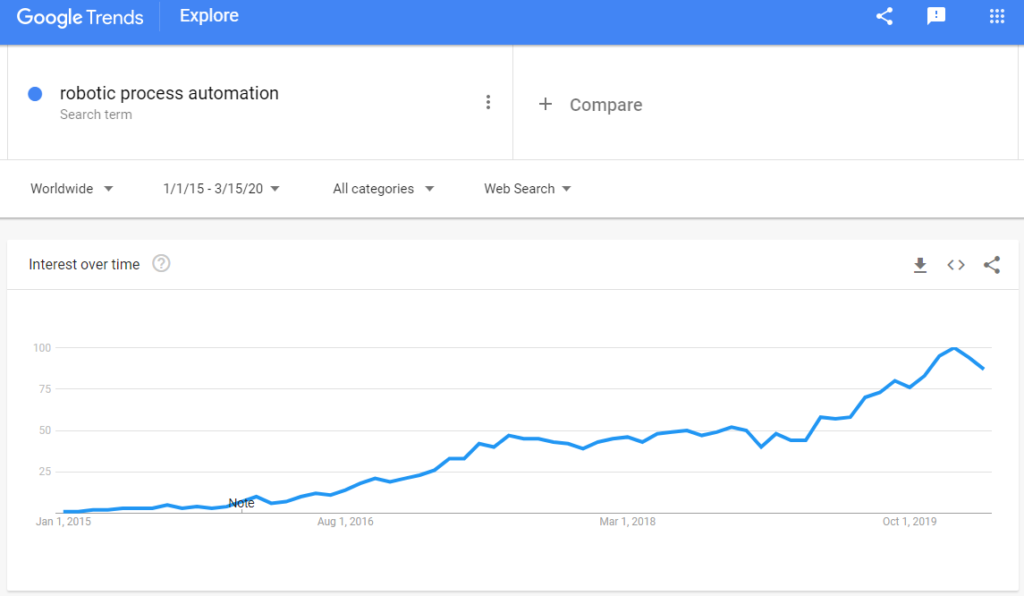
This is definitely worth paying attention to, so here is one sentence you can send to your team to explain RPA:
RPA is an emerging set of AI-based tools that are used to automate computer-based tasks that require minimal thinking, built with minimal programming and based on the notion of software robots.
Here is a small glance at what a simple RPA workflow looks like:
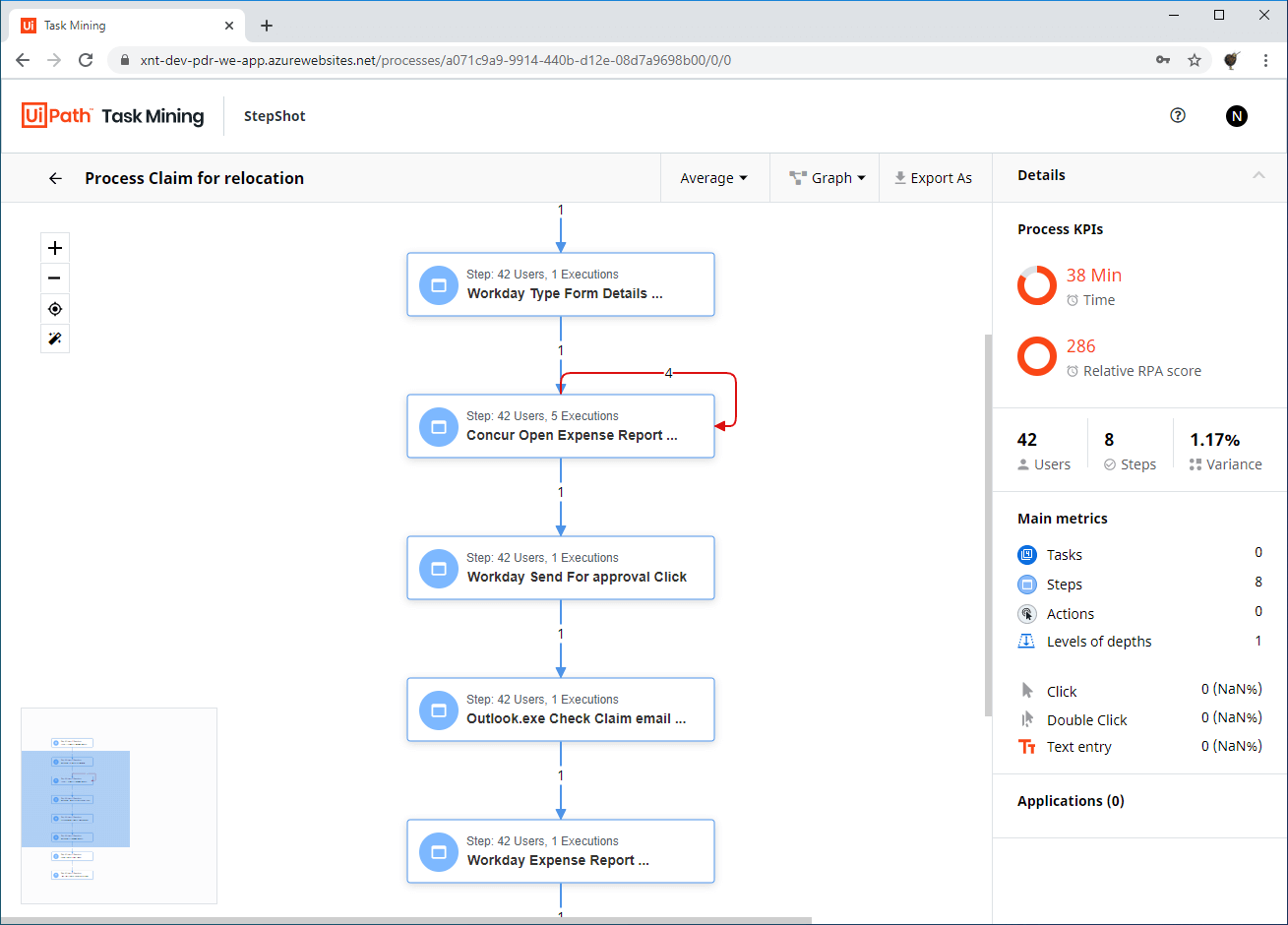
DOES RPA BELONG IN ANALYTICS?
Oh boy, this is a contentious topic. Even RPA vendors like UiPath themselves acknowledge that there is limited evidence to support the notion that RPA provides a return on investment when used purely for analytics initiatives.
The answer is more nuanced than a yes or no, especially because “analytics” is such a broad term. We can all probably agree that automation is helpful in a few areas: gathering data from sources, ensuring data quality, and especially in updating metadata and monitoring or operating data pipelines and jobs.
For this reason, we believe that while it may not have direct applications for analytics independently, in its current state, RPA certainly has complimentary benefits to modern data and analytics architecture and programs. The staircase of advanced analytics includes both RPA and machine learning, so it is critical to understand when to deploy robotic process automation instead of AI/ML.

© CFB Bots
HOW WE THINK ABOUT IT
I will split the next section in consideration for our different audiences: Executives and Technical Leaders.
First for our executive readers.
Obviously any talk of automation and robots has implications with your workforce. Like any technology, this could potentially replace jobs for humans; or, if the organization is ready for it, those workers can be trained and upskilled to higher-value roles. Second, RPA is loved by technologists (I will get to you next) – but it is not a silver bullet. Performing human tasks is complex, and even the most mundane computer-based jobs often require judgement and improvisation – something robots are not strong at. Think of large-scale menial tasks like copy/pasting, moving files, sending emails, clicking links. This is where RPA shines. Here is a scoring matrix you can use – the suitability of RPA is higher as you go to the right, with the attributes of each process listed in the boxes:
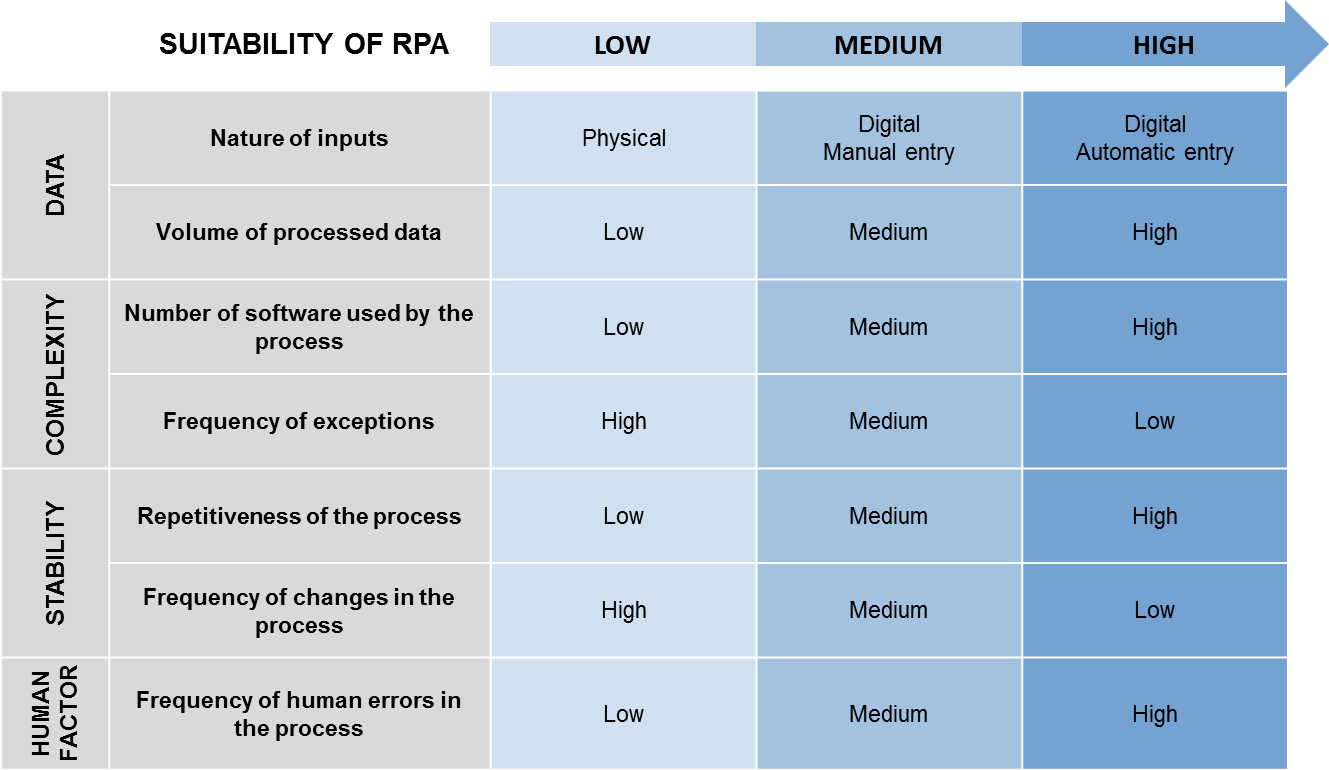
© Headlink-Partners
Ok techies, your turn.
To an RPA enthusiast (yes they exist), every computer-based task tends to look like a nail for the proverbial hammer of RPA. Try to resist the temptation to automate everything. Start small and prove the architecture first, especially if you can help other teams or departments who struggle gathering data or files for intelligence and decision-making purposes. There are some really practical ways to do this, so now we will go through a few places to start.
START HERE
I will assume we agree on the points above – let’s start with something that gives us a high chance of success. Instead of just giving you my personal opinion, I asked my team here at Newcomp Analytics – where would automation be minimally disruptive and most impactful on your data science and AI projects?
Without question, this is the #1 answer I got back – “help me capture data”. For almost every AI project, the data science or engineering teams at Newcomp are asked to get data from competitors’ or public websites or APIs. If a human were to do this, they would have to visit the site each day, click through product menus, and then do data entry to capture pricing. Or slightly better, we would have to hand code some very complex Python with libraries to scrape webpages; however, modern websites are so dynamic that this is almost impossible. So, enter the RPA opportunity. Our RPA bot could be designed to recognize and physically click menu items on the page repeatedly, then scrape pricing into a database.
Because a portion of my team has a BI background, another answer was in the spirit of Operational BI, specifically distributing reports to users. What if we had to report on some sentiment analysis data we gathered?
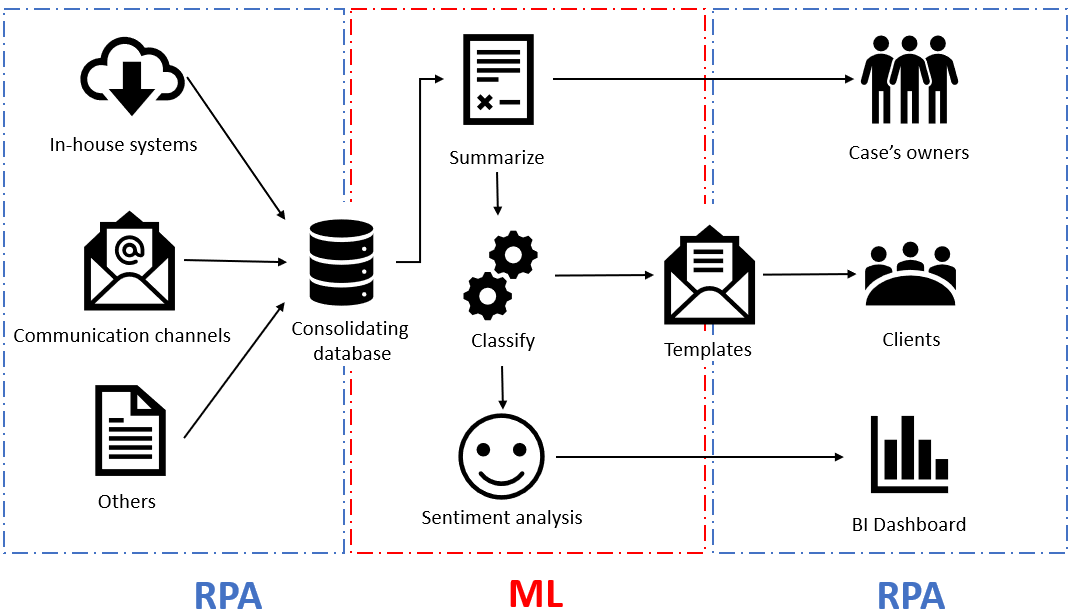
© Trung Nguyen, Data Scientist @ MSD | Curiousity
In this scenario, the RPA group designs the flow of inputs and outputs from our sources; then, the Data Engineering & Science team designs and builds the ML pipeline for natural language processing (NLP). Once those models are developed, they can be integrated into RPA workflows.
When the model spits out resultant data, the RPA bots insert the data into email templates and sends those emails to interested parties – and even accept feedback or training data to be fed back into the models…
FINAL THOUGHTS
The line is getting blurrier between digital machine intelligence and automation. This presents us with an ongoing opportunity to explore applications for task automation. Think about some existing tasks you know your company performs today: timesheet consolidation, financial forecast spreadsheet copy & pasting, invoice data entry etc. The classic “Should I Automate It?” Venn diagram is helpful here as you decide if the task is worth automating with machine learning. Any tasks that fall into “NO TRAINING DATA” might be good candidates for RPA.
WHAT NEXT?
We have a few things for you next to help you go even deeper into intelligence automation:
Analytic Process Automation: Even if this is a new term for you, APA isn’t a new concept. It is used in 37% of the Global 2000 companies. Check it out for yourself here!
WRITTEN BY:
 |
CHRIS FOSTER, VP, ANALYTICS & DATA SCIENCE
|

